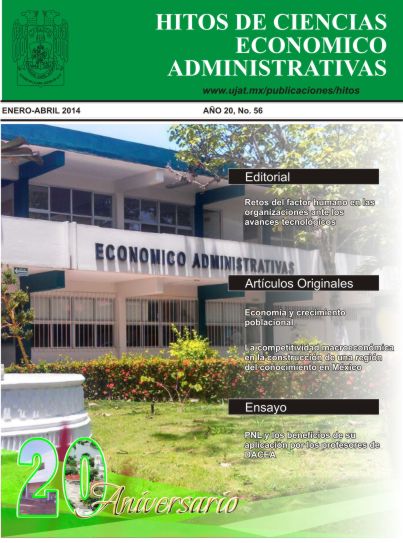PNL Y LOS BENEFICIOS DE SU APLICACIÓN POR LOS PROFESORES DE D.A.C.E.A.
DOI:
https://doi.org/10.19136/hitos.a0n56.824Keywords:
Neurolingüística. Docente. Funcional. Herramienta.Abstract
RESUMEN: El ensayo pretende difundir la importancia sobre conocer los estilos de aprendizaje que se tienen en las aulas, de cómo mejorar nuestras habilidades de comunicación y que esta sea asertiva; es decir, entender mejor a los alumnos, la manera en qué ellos aprenden y que lo presentado en clase sea recibido favorablemente al receptor por el canal de percepción adecuado. Se propone como estrategia de carácter novedoso a la Programación Neurolingüística (PNL) en nuestras aulas. PNL es una herramienta útil para el docente, ya que brinda resultados casi inmediatos en el proceso enseñanza-aprendizaje, debido a que es un enfoque práctico, dinámico y funcional, que además permite poder realizar actividades exitosas, entretenidas y motivadoras. Con mayor alcance toda vez que permite abarcar a los tres tipos de estilos de aprendizaje (percepciones sensoriales) que surgen a partir de las investigaciones de Richard Bandler y John Grinder (creadores) en 1985. En lo que al lenguaje corporal se refiere, se sugieren movimientos corporales que deben evitarse en clase para tener una mejor relación alumno-maestro, a modo de crear un ambiente académico armónico y agradable, y que el alumno se sienta con la confianza suficiente de acercarse al profesor y aclarar sus dudas en clase, en lugar de quedarse con ellas durante todo el parcial, semestre o de por vida. Finalmente, recordar que no todos los alumnos aprenden de la misma manera, ni a como los maestros lo hacemos, sino es cuestión de buscar el punto medio para que la información dada en clase llegue eficientemente a través de los canales de percepción apropiados. Además de que se aprenda a leer el lenguaje corporal de nuestros educandos e identificar casi de manera inmediata si realmente están entendiendo, si los estamos aburriendo, si definitivamente no tenemos su atención y por eso su atención está dispersa. Al estar consciente de que ésta herramienta nos va a permitir tener un mejor acercamiento, podremos tener clases más significativas, con mayor aprovechamiento de los tiempos y de los recursos que tengamos por ende, poder cumplir en casi su totalidad con lo planteado y con los objetivos de aprendizaje propuestos en nuestros planes de trabajo. ABSTRACT: This essay pretends to spread the importance of being aware of the different learning styles that we can find in our classrooms, knowing how to improve our communication skills, and how to become assertive in our communication to understand our students better, know the manner they learn, and make it possible that what is presented in class can favorably be perceived by the receiver through the appropriate perception channel. This essays suggests to apply Neurolinguistic Programming (NLP) in our classrooms, as an innovative strategy. NLP is a useful tool for teachers as it provides almost immediate results in the teaching-learning process due to its practical, dynamic and functional approach, which also allows to perform successful, entertaining and motivating activities. With extended range because it covers the three types of learning styles (sensory perceptions) arising from the research done by Richard Bandler and John Grinder (creators) in 1985. Regarding the body language, it is suggested to avoid some body movements in class in order to have a better teacher-student relationship, and so creating a harmonic and pleasant academic environment that makes students feel confident enough to approach to the teacher and ask questions concerning the class or doubts they may have, instead of not doing so and keeping those questions with themselves during the partial, the semester, or even for the rest of their whole life. Finally we must remember that not all students learn in the same way or as the teachers do. It´s just a matter of searching the midpoint to make that the information provided in class reaches the students efficiently by using the proper perception channels. Furthermore, the teachers must learn to read the body language of their students to identify almost immediately if the students are really understanding or not, if the teacher is making the students get bored, or if the teacher definitely does not have the students´ attention and so their attention is scattered. Being aware that this tool will allow us have a better approach to our students, we can conclude that our classes will be more meaningful, with a better use of the time and the resources, and so, we will accomplish almost entirely the learning goals proposed in our work plans.Downloads
Downloads
Published
Issue
Section
License
As a requirement for the manuscript, the author is requested to provide the Copyright Assignment Letter, so that the Journal has the publication rights and to avoid plagiarism.
PLAGIARISM POLICIES
The Editorial Board of the Journal HITOS DE CIENCIAS ECONÓMICO ADMINISTRAIVAS has the authority to reject in the review process any manuscript that does not have adequate citation in the documents consulted in its scientific research work, which can be considered as plagiarism behaviors. Likewise, the referees carry out the plagiarism review using specialized software, such as iThenticate, among others.
COPYRIGHT POLICIES
Authors who have publications in the journal accept the following terms: • At the time the manuscript is accepted, the author transfers the copyright to the Journal HITOS DE CIENCIAS ECONÓMICO ADMINISTRATIVAS.
- The authors may make additional agreements for non-exclusive distribution of the published version of the article (e.g., including it in an institutional repository or publishing it in a book) provided that the initial publication in this journal is indicated.
- Authors are allowed and recommended to publish their research work on the Internet (eg, institutional or personal files), which would allow more beneficial exchanges to increase the citation of the published work.
This work is licensed under Creative Commons Attribution-NonCommercial-NoDerivatives 4.0 International





